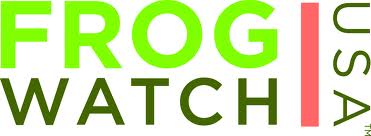Field Conservation
The Virginia Living Museum staff and volunteers participate in several field conservation projects.
Green Teens
Clean the Bay Day – Chesapeake Bay Foundation
VLM volunteers and staff participate in the CBF’s annual “Clean the Bay Day” to remove trash and debris from creeks, streams and rivers of the Chesapeake Bay watershed. The VLM crew cleans the creeks and shorelines of Deer Park Lake and Lake Maury, which flow directly into James River, the largest Chesapeake Bay tributary in Virginia. Read more about the CBF event.
Coastal Cleanup – Ocean Conservancy
VLM volunteers and staff participate in Ocean Conservancy’s annual “International Coastal Cleanup” to remove trash and debris from local coast lines. Dozens of volunteers pick up a wide variety of trash and objects along the shoreline and also by boat. Read more about the Ocean Conservancy event.
FrogWatchUSA


“FrogWatch USA is AZA’s flagship citizen science program that invites individuals and families to learn about the wetlands in their communities and help conserve amphibians by reporting the calls of local frogs and toads. For over ten years, volunteers have been trained to enter their FrogWatch USA information and ongoing analyses of these data have been used to help develop practical strategies for the conservation of these important species” – AZA 2014.
This two-part course will teach you all about frogs and toads in Virginia, how to identify them, and how to contribute that data. We will host the training course at the Virginia Living Museum on the following days and times:
Come back later for details.
If deciding to attend our FrogWatch training, please keep the following in mind:
- Anyone below the age of 16 must be accompanied by an adult.
- The course is free to attend, but you must be able to attend both parts (A and B) in their entirety to become certified.
- Food and refreshments will be provided, but anyone with dietary restrictions are encouraged to bring their own.
Oyster Restoration




artificial oyster reefs using castle blocks to “raise the surface” of old oyster reefs to help them “become functional oyster habitat that will be capable of keeping up with sea level rise.” Read more about oyster castle blocks.





